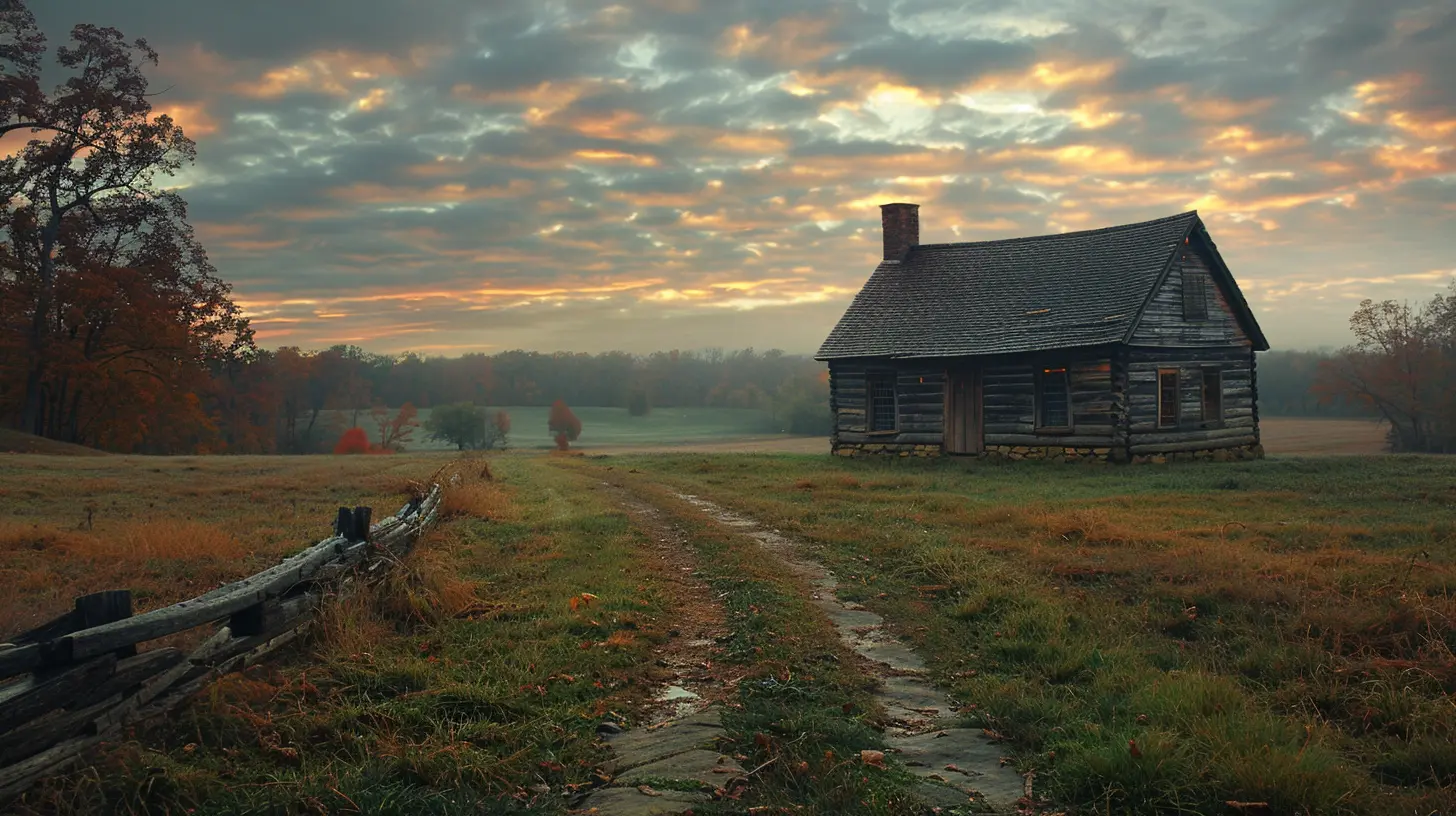Explore the Rich History of the Underground Railroad
12 August 2025
The Underground Railroad stands as one of the most dramatic and morally significant events in American history—a complex, dangerous, and awe-inspiring network that enabled thousands of enslaved people to escape to freedom. But despite its extensive impact and its well-documented participants, many people still wonder: how much do we really know about this clandestine system? How did it work? Who were the brave souls who risked their lives to help others flee the bonds of slavery?
If you're looking to uncover the rich history of the Underground Railroad, you're in the right place. In this post, we'll walk through the intricate details of this covert network, explore its origins, discuss its key figures, and reflect on its legacy. So, buckle up—this is going to be an eye-opening journey through history!

What Was the Underground Railroad?
No, it wasn’t an actual railroad running beneath the ground. The Underground Railroad wasn’t a physical structure at all, but rather an intricate web of secret routes, hidden locations, and courageous people dedicated to helping enslaved African Americans gain their freedom.This wasn’t an “official” organization with membership cards or offices. Instead, it was an informal, grassroots network made up of abolitionists, freed slaves, and allies—both Black and white—who provided shelter, transportation, and other crucial aids to those seeking freedom.
The “railroad” terminology, like "stations" and "conductors," came from code words used to maintain secrecy. The enslaved individuals were often referred to as "passengers" or "cargo," the safe houses were known as "stations," and those who guided the freedom-seekers were called "conductors." These metaphorical terms disguised the operation from authorities, making the Underground Railroad an even more fascinating and remarkable phenomenon.
The Origins of the Underground Railroad
So where did it all begin? The origins of the Underground Railroad are a bit murky, but historians generally agree that it started in the late 18th century, just as the movement for abolition was gaining momentum in the northern United States. By the early 19th century, it had transformed into a well-organized system that spanned from southern slave-holding territories across the northern states and up into Canada.It’s important to note that the Underground Railroad wasn’t just some sporadic act of rebellion. It was a direct response to the brutal realities of slavery—a system that saw human beings treated as property, often subjected to grueling labor, physical punishment, and broken families.
Slavery had taken root primarily in the southern states, where the economy heavily relied on agriculture—especially cotton, tobacco, and sugar cane. As the abolitionist movement gained strength in the North, it inspired individuals to take action in ways that transcended protest speeches and pamphlets. People were ready to put their lives on the line to help others find the freedom they deserved.
The Role of Abolitionists
Much of the Underground Railroad’s success can be attributed to the efforts of abolitionists—people who sought the eradication of slavery. These brave souls defied state laws and federal authorities to help enslaved individuals escape. They were the heartbeat of this network.Some were well-known figures, like Harriet Tubman, who earned the nickname "Moses" for leading over 300 slaves to safety. Tubman herself was an escaped slave, and despite the danger of being caught and returned to slavery, she made multiple trips back into the southern states to guide others to freedom. Her story is nothing short of heroic.
But not all participants were famous or even sought recognition. Many "conductors" were ordinary people—farmers, pastors, teachers, and even children—who would open their homes to strangers in need, offering food, shelter, and directions to the next safe house.
Even Quakers, deeply religious and pacifist by nature, played a huge role in the Ohio and Pennsylvania areas. They believed in the equality of all people and found slavery abhorrent, which led them to create extensive networks of safe houses and support systems.
But this help didn’t come without a price—abolitionists faced severe penalties if caught. For example, after the passage of the Fugitive Slave Act of 1850, anyone caught aiding a fugitive could be fined or imprisoned. This federal law required that even in free states, escaped slaves had to be returned to their “owners,” tightening the noose around those seeking freedom. As a result, many on the Underground Railroad had to become even more secretive and creative in their operations.

How Did It Work?
Okay, so how exactly did people escape through this network? The precise workings of the Underground Railroad were as varied as the people involved, but one thing was clear: it required stealth, bravery, and a whole lot of resourcefulness.Escaping slaves often had to travel at night, using the North Star as their guide. The routes they followed were filled with danger—wild terrain, swamps, rivers, and, of course, the risk of running into slave catchers eager to return them to captivity for a reward.
Along the way, they’d stop at various “stations”—homes, barns, or even churches—where sympathetic allies would provide them with food, rest, and information about their next steps. Sometimes, "conductors" would accompany the fugitives, essentially escorting them from one safe house to the next. But more often than not, escaped individuals had to rely on specific codes and secret signals to know where it was safe to take refuge.
Quilts, lanterns, and songs were often used as signals to guide fugitives. For example, a lantern in the window of a home could indicate that it was a safe place to stop, while certain lyrics in songs—like "Follow the Drinking Gourd"—offered coded directions. Let’s just say there wasn't exactly a Google Maps to assist them!
The Canadian Connection
By the mid-19th century, many fugitives aimed to travel all the way to Canada, where slavery was illegal. Canadian cities like Kingston, Toronto, and St. Catharines became significant destinations where freedom-seekers could start new lives.Crossing the border into Canada provided an escape from the reach of the Fugitive Slave Act. Once in Canada, former slaves were no longer at risk of recapture and could live without fear of returning to bondage. This made Canada the ultimate destination for many on the Underground Railroad, and several Black communities were established in Canadian towns and rural areas as a result.

Key Figures of the Underground Railroad
One of the most incredible things about the Underground Railroad was its cast of everyday heroes. While we've already mentioned Harriet Tubman, there were many others who deserve recognition:- Frederick Douglass: Though best known as a powerful orator and writer, Douglass played a hands-on role in the Underground Railroad, offering his home as a stop along the route. His eloquent speeches and writings also galvanized the abolitionist movement.
- William Still: Often referred to as the "Father of the Underground Railroad," Still kept meticulous records of escapees and their stories. His notes have provided historians with invaluable information about the workings of the Underground Railroad.
- Levi Coffin: A Quaker abolitionist, Coffin helped more than 3,000 slaves escape to freedom, earning him the title “President of the Underground Railroad.”

The Legacy of the Underground Railroad
The Underground Railroad left a profound legacy, not only in terms of the lives it saved but in the way it symbolized resistance to an inhumane system. It showed that even in the face of extreme danger, ordinary people could—and did—make a difference for justice and human rights.Today, you can still explore the remnants of this storied past. Many historic sites across the United States and Canada offer tours and educational exhibits about the Underground Railroad. For example, the National Underground Railroad Freedom Center in Cincinnati, Ohio, is a museum dedicated to telling the stories of those who fought for freedom. Similarly, several historic homes that were once stops along the railroad are now preserved as monuments to this remarkable chapter in history.
Reflecting on the Underground Railroad
So, what does the Underground Railroad teach us today? A lot, actually.It’s a reminder that history isn’t just something that happens in textbooks—it’s a series of stories, actions, and choices made by real people. The Underground Railroad is one of the clearest examples of what individuals can accomplish when they fight for justice and equality, even when it means risking everything.
In a world still grappling with issues of inequality and oppression, the lessons of the Underground Railroad feel as relevant as ever. It’s a vibrant example of human resilience, compassion, and the pursuit of freedom.
So, next time you find yourself reflecting on history, think about the Underground Railroad as a symbol of hope, courage, and the unwavering belief in the value of human freedom.
all images in this post were generated using AI tools
Category:
North America TravelAuthor:

Pierre McKinney
Discussion
rate this article
1 comments
Marie Riley
Powerful journey of resilience.
August 15, 2025 at 4:15 PM

Pierre McKinney
Thank you! I'm glad you found the journey of resilience inspiring. It truly highlights the strength and determination of those who fought for freedom.


